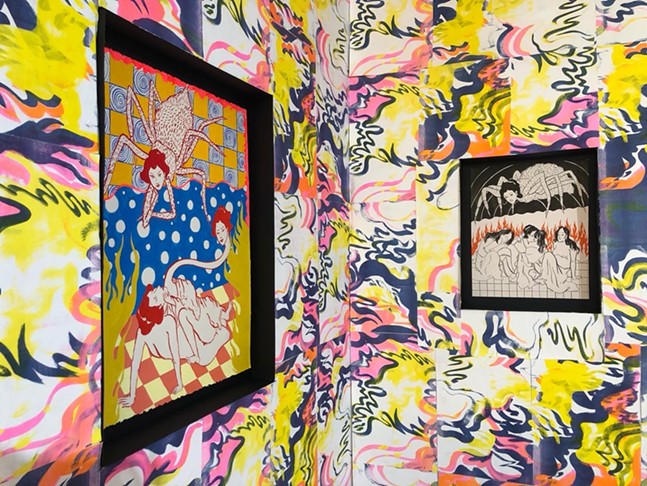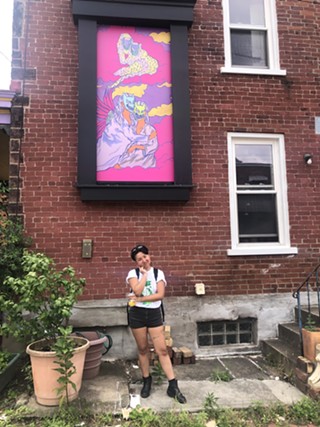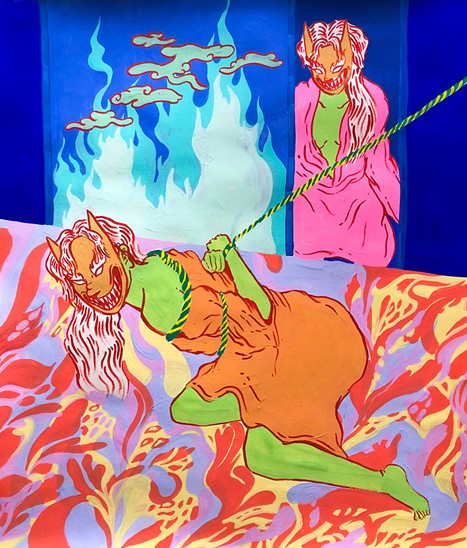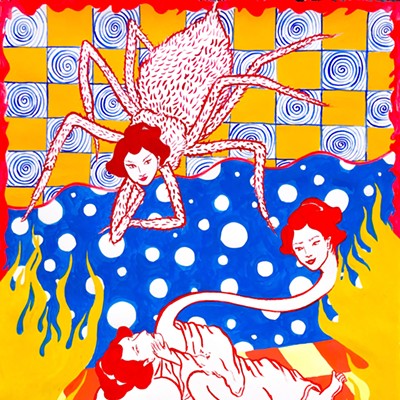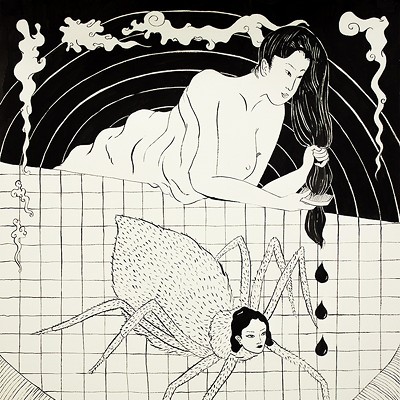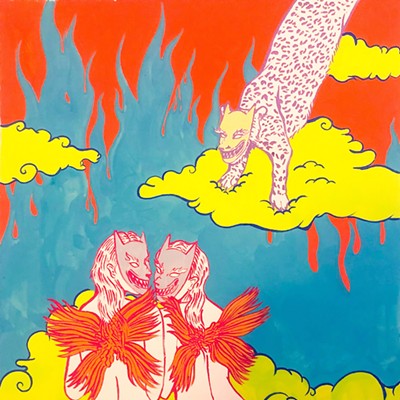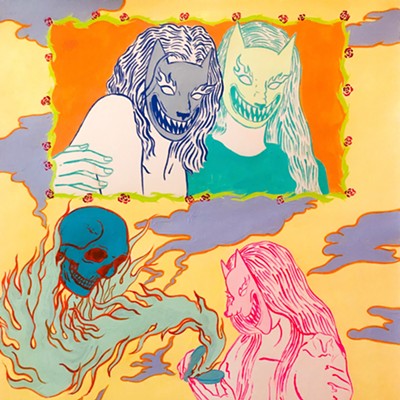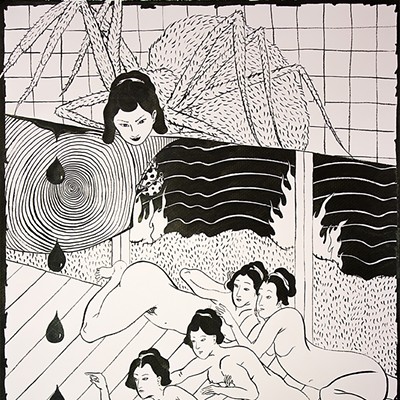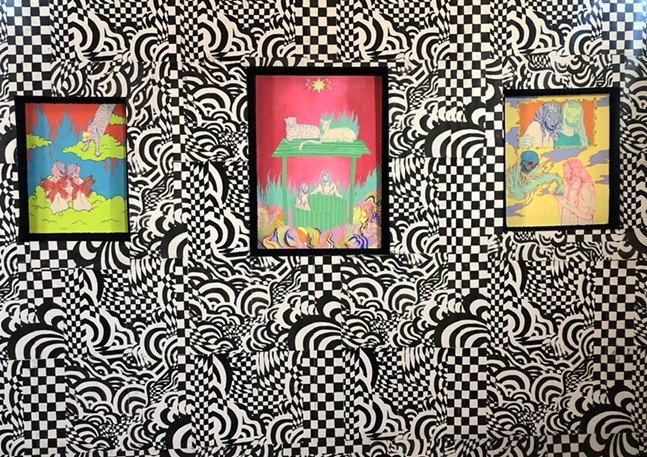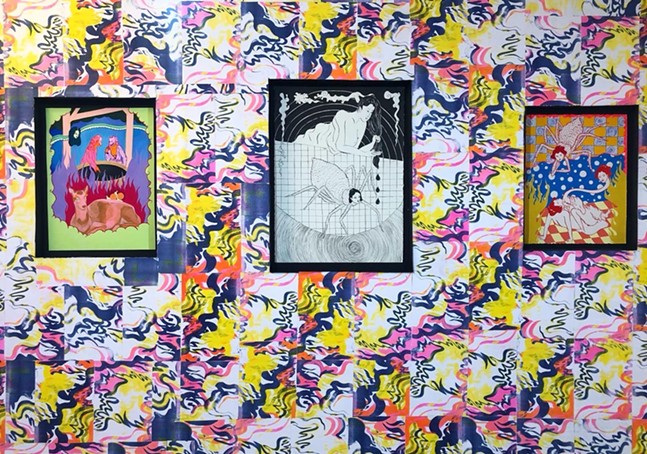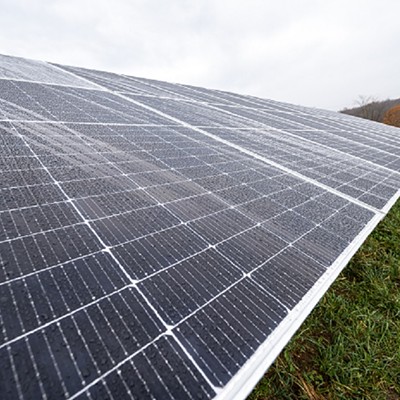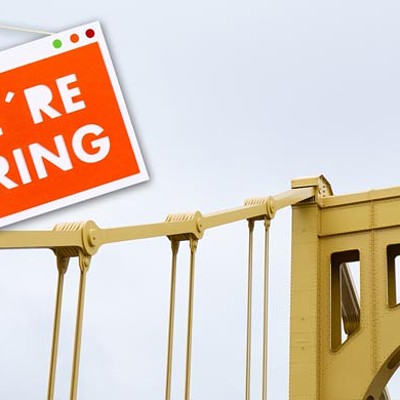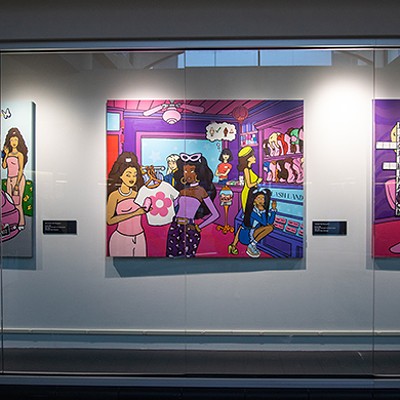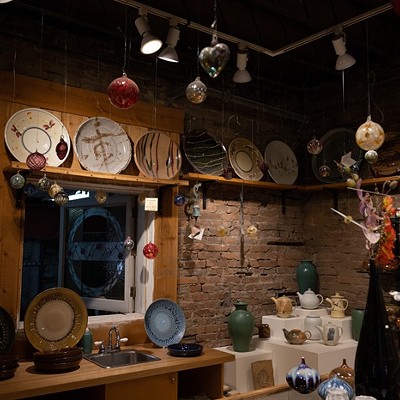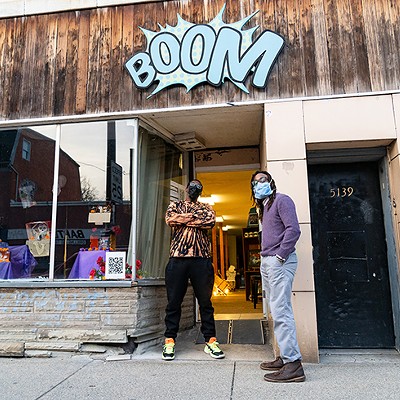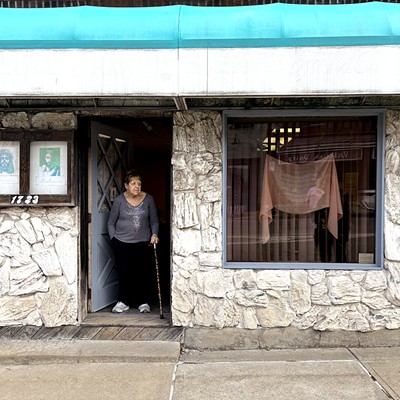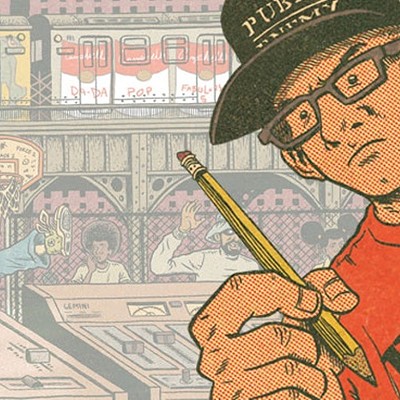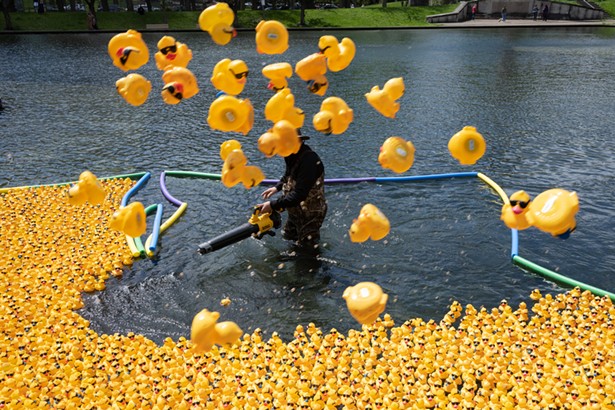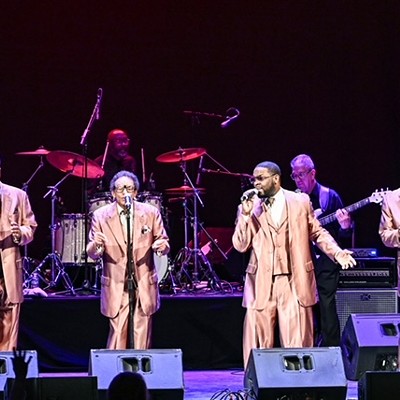In the psychedelic space between mythological demons and femininity, erotica and pop art, you’ll find Eriko Hattori’s work. Hattori (they/them) is an artist based in Pittsburgh whose artistic practice captures whimsical dream-like scenes that are, at the same time, deeply telling of our modern society.
Deeply influenced by their experiences as a queer, non-binary Japanese-American, Hattori’s work reflects on perceptions of Japanese femininity and the commodification of bodies and cultures. Recently, Hattori has exhibited work at Pittsburgh International Airport and Sidewall: a mural project, an outdoor gallery space located at the corner of 608 South Millvale Ave. and Lima Way.
Pittsburgh City Paper interviewed Hattori about their work, influences, and process of creation.
Your work is particularly influenced by traditional Japanese art (ukiyo-e) and mythology (yokai). Can you describe your first interactions with these cultural items and how they affect your work?
I grew up with both ukiyo-e and stories of yokai in a more passive way but started becoming more interested as an adult when I started taking my arts practice more seriously. I got very interested in the work of Utagawa Hiroshige in particular while I was a student and always kept his work in my back pocket. I eventually found many online databases and archives of Japanese woodblock prints and would spend hours looking them up and saving them, which led to shunga (erotic woodblock print) wormholes and endlessly looking at prints that narrated ghost stories.
I’m largely attracted to stories that center on women-creatures and ghosts, and I often feature them and their stories throughout my work. The Jorogumo, or spider-whore, is the one I work with the most, and have made her into an icon across my lexicon. I’m particularly drawn to narratives of these women-creatures and demons as they’re either connected to trauma, ostracization, or fear. Many of these figures are told in unflattering, negative lights and my aim is to reclaim them from narratives that I find to be rooted in patriarchy and an unwillingness to understand complex identities and backgrounds.
How does your identity, as a queer Japanese-American artist, factor into your work?
Oh, it plays a huge role, since most, if not all, of what I make pulls from my experience as a queer, Japanese person who grew up in the States. I grew up in West Virginia and was the only Japanese-American person at my school for the majority of my K-12 schooling, which felt extraordinarily unique and isolating. Coupled with the fact that I was the only “-American” and queer person (or, at least, the only one who’s come out) in my family, I felt like I spent a lot of time trying to make sense of who I was within all of these intersecting contexts, experiencing both loneliness and cultural fetishization while feeling very disconnected from my culture at the same time.
A lot of the research component of my work is me, trying to reconnect with my heritage, and finding narratives that resonate with me. This is where a lot of my connection to yokai, specifically the women-creatures and ghosts, comes from. Though I don’t identify as a woman, my Japanese-American girlhood shaped me a lot, but also left me with a lot of questions, and I suppose, making art is my way of making sense of all of its fragments and contradictions.
What is your approach to creating a new piece of work?
I do a lot of image-collecting and personal archiving to build up a bank of references for my paintings and drawings. I gather a lot from vintage Japanese erotica and fetish publications, Japanese pulp movie and theater posters, ukiyo-e (specifically erotic prints or shunga), pictures of animals fighting, vintage anime stills, and more. A few years ago, I would start off by making a digital collage with my references and work directly from these collages, but now I kind of do that part of the process more mentally, and work directly on my surfaces first.Otherwise, my process is pretty quick and straightforward! After I draft the image, I fill it in with either paint or colored pencil. My color choices come pretty organically, and the flatness and vibrance of my colors come from using acrylic-gouache blends. I used to finish work really quickly, especially during the pandemic, but these days I’ve been taking my time and working on multiple pieces concurrently as opposed to just churning things out one by one.
What mediums do you choose to work with?
I primarily work with gouache on paper and colored pencil. I’d consider those my home bases but recently have been doing some graphite drawings and some screen printing. Drawing with Sumi ink feels very foundational, so I find myself returning to it.
Who are some artists or what around you inspires you to create?
I always call Tadanori Yokoo my art dad, and any of his contemporaries who were doing poster design work for avant-garde theater projects in Japan during the '60s and '70s. Tsukioka Yoshitoshi and Toriyama Sekien are the printers whose work I return to the most; especially Tsukioka Yoshitoshi’s portraits of women, his One Hundred Aspects of the Moon series, his New Forms of Thirty-Six Ghosts series, and Toriyama Sekien’s Demon Horde’s Night Parade prints.Contemporary artists I’ve been looking at a lot lately are Cindy Ji-Hye Kim, Heather Benjamin, Sharada Tolton, Ram Han, Chris Lloyd, Kyle Dunn, and Maya Fuji. Film also influences my work a lot, and I often rewatch House by Nobuhiko Obayashi or parts of Kwaidan by Masaki Kobayashi for inspiration.
Eriko Hattori. linktr.ee/erikohattori

